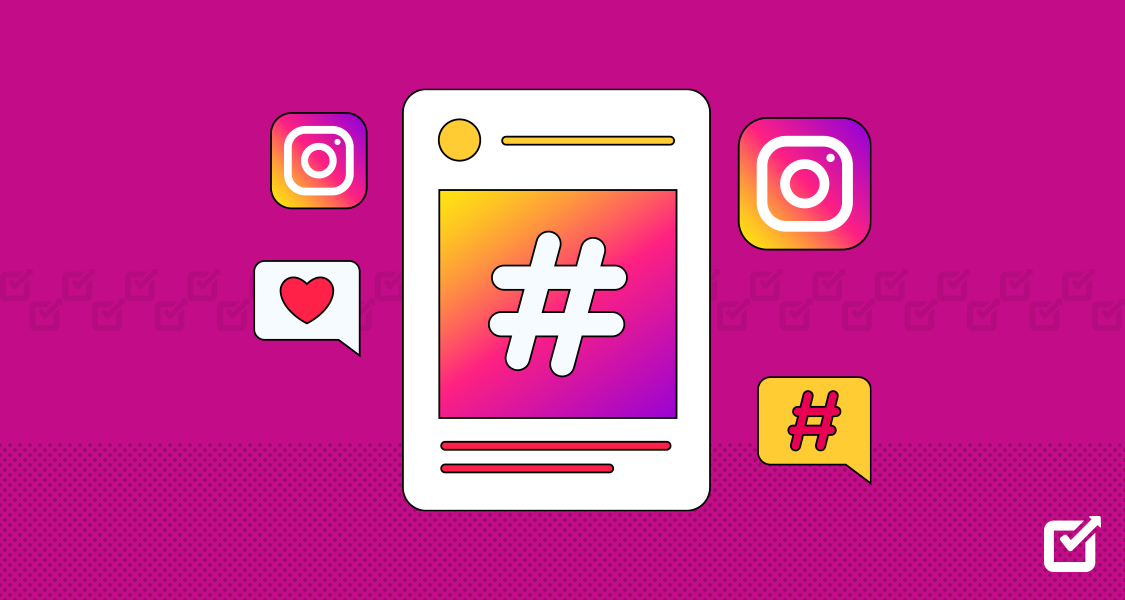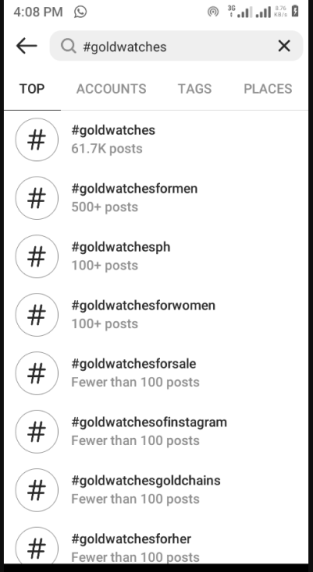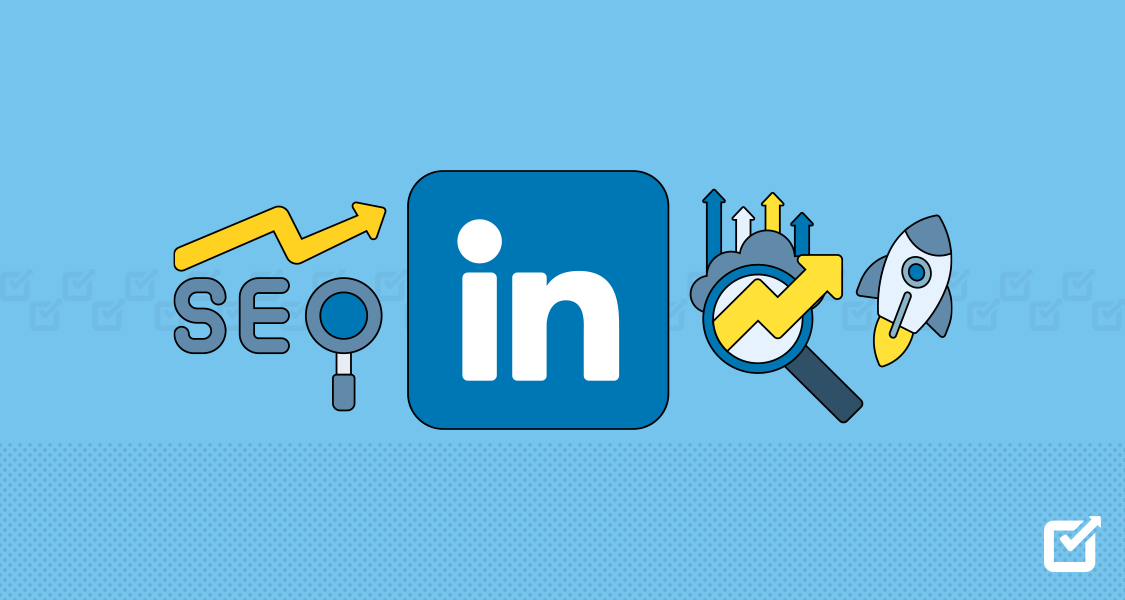In the dynamic landscape of social media, mastering the art of Instagram hashtags remains a pivotal strategy for maximizing visibility, engagement, and brand awareness.
With each hashtag functioning as a digital key to unlocking a world of connections, conversations, and community engagement, mastering their usage is a cornerstone for success in navigating Instagram’s ever-changing algorithm and fostering a thriving online presence.
This ultimate guide aims to provide you with comprehensive insights, strategies, and best practices to navigate the intricacies of Instagram hashtags in 2024. With the knowledge shared in this job and the help of a social media publishing tool, you will be well-equipped to harness Instagram’s potential to the fullest extent and elevate your brand’s impact on this dynamic social platform.
What Is an Instagram Hashtag
An Instagram hashtag is a word or phrase preceded by the “#” symbol (also known as the hash or pound sign) that is used to categorize and organize content on the Instagram platform.
Hashtags allow users to label their content with relevant keywords or topics, making it easier for other users who are interested in those topics to find and engage with the content.
Why Are Instagram Hashtags Important
Whether you’re a brand, influencer, or content creator, you should seriously consider using hashtags in your Instagram posts. The following are the reasons (supported by research) why Instagram hashtags are important:
Increased Visibility
According to this study, using suitable hashtags can boost the reachability of a post by making it visible to a wider audience. Here’s how Instagram’s algorithm works to ensure users’ posts enjoy increased visibility:
When you include hashtags in your post’s caption or comments, you’re essentially categorizing your content based on the topics or themes represented by those hashtags. This categorization helps Instagram algorithms understand the content of your post and associate it with specific topics.
For popular and frequently used hashtags, Instagram has a “Top Posts” section at the top of the hashtag’s feed. This section showcases the most engaging and popular posts that have used that hashtag. See below:

Instagram Popular and frequently used hashtags If your post gains enough engagement, it could appear in this coveted section, further boosting its visibility.
Furthermore, using a common hashtag when partnering with influencers, other brands, or collaborators can create a unified presence for the campaign. This cross-promotion exposes your brand to a wider audience, increasing its visibility.
Increased Discoverability
If you search “How to increase discoverability of social media posts” on Google search, you’ll see that using hashtags is one of the most recommended strategies. This means most people understand how efficient top Instagram hashtags are in increasing posts’ discoverability on social media.
Discoverability and visibility go hand in hand. A highly visible Instagram post is likely to be highly discoverable. Here’s what that means:
When someone searches for a particular hashtag, Instagram compiles and displays a feed of all recent and top posts that have used that hashtag. So, when you include hashtags in your Instagram posts or captions, those posts become discoverable to a wider audience beyond just your followers.
In addition to regular posts, you can use hashtags in Instagram Stories and Reels. When users search for or click on a hashtag in these formats, they can see a collection of Stories or Reels that have used that hashtag. This provides yet another way for your content to be discovered.
Increased Engagement
In one of its research studies, X (formerly Twitter) found out that tweets with hashtags can boost engagement by almost 50% for brands and 100% for individuals. So, if you’ve been getting very few reactions to your Instagram posts, perhaps it’s time to include hashtags in your social media marketing strategy.
When you use hashtags, you open up opportunities for engagement and interaction. People who share similar interests can find your posts through those hashtags, and they might engage with your content, such as liking, commenting, and sharing. Here’s an example:

Instagram hashtags post example From the screenshot, you can see the user used popular Instagram hashtags that are relevant to campers and survivalists. You can bet that the majority of all the people who’ve reacted to that post share similar interests. This engagement can attract even more users to join the conversation.
Increased Brand Awareness
With increased visibility, discoverability, and engagement comes increased brand awareness. Research shows that branding hashtags can help an organization differentiate itself from others in a way that helps to strengthen its target audience’s understanding of the organization.

Increase brand awareness with location hashtags. One of the best ways to increase brand awareness is by using location-based hashtags. If your brand has a physical presence or is associated with specific locations, using location-based hashtags can help you connect with local customers and increase brand awareness within your community. Here’s an example:
The company has used the location hashtag (#miami), along with other relevant hashtags that people in Miami may use to search for air conditioning repair and maintenance services. Using such top hashtags on Instagram increases brand awareness, visibility, and discoverability.
Engage With Audience Through a Unified Dashboard
Use Social Champ to manage conversations across all social media platforms through a single inbox feature.
How Brands Are Using Hashtags in 2025
When it comes to hashtags, there are different strategies that brands have been using and might continue to use in 2024. They include:
To Market Their Brand
There’s no doubt that the hashtag is a powerful marketing tool. Brands increasingly recognize this and are using relevant hashtags to market themselves. They feature user-generated content in their marketing campaigns by curating posts that use their campaign hashtags.
One way brands use hashtags to market their brands is by using dedicated hashtags to share behind-the-scenes glimpses of their operations, employees, and culture. This provides a more personal and transparent image of the brand.
Brands also create interactive campaigns that encourage users to create and share their content using a specific hashtag. This engagement not only promotes the brand but also provides users with a unique experience.
To Announce New Products
Brands normally leverage hashtags to build excitement, generate buzz, and drive engagement around new product launches. When unveiling a product, they may use dedicated hashtags that capture the essence of the new offering. They may use hashtags such as #brandnew, #latest, or #newproductalert.

Hashtags for New Products Announcement If a new product comes with a special launch offer or discount, brands use a hashtag to communicate this promotion to their audience. They may also offer pre-orders or exclusive access to their loyal customers. Using a specific hashtag like #ExclusiveAccess or #PreOrderNow encourages users to participate and share their excitement. See the example below:
To Showcase Product Features
Brands also use hashtags to highlight specific features or benefits of their products. These hashtags accompany posts that showcase the product’s features, design, and benefits. Here’s an example:

Hashtags to showcase the product’s features By using hashtags that highlight the specific features or benefits of their products, searchers are able to find content related to those products and features.
To Show Support for Social Movements
Brands align themselves with social causes and use relevant hashtags to show support and solidarity. You’ve probably seen many brands using the #blacklivesmatter hashtag to advocate for the rights of black people.
Other popular hashtags that show support for social movements and causes include #gaypride, #makeadifference, #donate, #prayerforukraine, etc. When brands use these hashtags, they portray themselves as socially responsible and connecting with users who are passionate about those causes.
To Announce and Promote Events
If there’s a physical or virtual launch event, brands create unique and memorable hashtags to promote upcoming events. These hashtags reflect the event’s theme, purpose, or name.
Leading up to the official announcement of the event, brands use teaser content with the event hashtag to create curiosity and intrigue. These teasers can include graphics, videos, and cryptic messages. This encourages users to attend the event or follow online for the big reveal.
Once the event date is confirmed, brands announce it using the event hashtag. Here’s an example:

Hashtags for promote events Brands may also share comprehensive event details, such as location, schedule, speakers, performers, workshops, and more, using the event hashtag. This helps users easily find all related information. It also serves as a “save-the-date” announcement for followers to mark their calendars.
Related Article: How to Use Instagram for Business to Boost Sales
Types of Popular Instagram Hashtags
Popular Instagram hashtags cover a wide range of categories and topics, reflecting the diverse interests and conversations within the platform. Here are some types of popular Instagram hashtags:
- Lifestyle and Inspiration: Hashtags related to personal growth, motivation, and positivity, such as #Inspiration, #MotivationalMonday, #LiveYourBestLife, and #PositiveVibes.
- Travel and Adventure: Hashtags for sharing travel experiences, wanderlust, and exploration, such as #TravelGram, #Wanderlust, and #TravelDiaries.
- Food and Cooking: Hashtags for food enthusiasts, recipes, and culinary delights, such as #Foodie, #InstaFood, #RecipeOfTheDay, and #Delicious.
- Fitness and Wellness: Hashtags related to fitness, workouts, healthy living, and wellness, such as #FitLife, #FitnessGoals, and #WellnessJourney.
- Fashion and Style: Hashtags for showcasing fashion trends, outfits, and personal style, such as #Fashionista, #OOTD (Outfit of the Day), and #FashionLover.
- Beauty and Skincare: Hashtags for makeup, skincare, beauty tips, and cosmetics, such as #SkincareRoutine, #MakeupGoals, and #BeautyTips.
- Photography and Art: Hashtags for sharing photography, art, and visual creativity, such as #PhotographyLovers, #ArtGallery, and #VisualArt.
- Parenting and Family: Hashtags related to parenting, family life, and child-rearing, such as #ParentingJourney, #MomLife, #DadLife, and #ParentingTips.
- Technology and Innovation: Hashtags for tech enthusiasts, gadgets, and innovation, such as #Techie, #GadgetLove, #Innovation, and #TechGeek.
- Music and Entertainment: Hashtags for music lovers, concerts, and entertainment, such as #MusicIsLife, #ConcertVibes, #MovieNight, and #MusicFestival.
- Business and Entrepreneurship: Hashtags for business tips, entrepreneurship, and career growth, such as #BusinessHacks, #CareerAdvice, and #StartupLife.
- Self-Care and Mental Health: Hashtags for self-care practices, mental health awareness, and self-love, such as #SelfCareSunday, #MentalHealthMatters, #SelfLoveJourney, and #MindfulLiving.
- Hobbies and Interests: Hashtags for specific hobbies and interests, like #GamingCommunity, #BookLovers, #FitnessEnthusiast, #DIYProjects, and #PlantLovers.
Remember that while using popular Instagram hashtags can increase your post’s visibility, it’s important to ensure the hashtags you use are relevant to your content and target audience. Mixing trending Instagram hashtags with more niche ones can help you reach both a broader and more engaged audience.
Trending Instagram Hashtags in 2025
At times, it may not be the best strategy to include trending hashtags on Instagram, as it’s more difficult to stand out from the millions of posts with the hashtags. Nevertheless, it’s helpful to be aware of the trending Instagram on Instagram.
Here are the most trending Instagram hashtags today:
- #love: 2.1 billion posts
- #Instagood: 1.6 billion posts
- #Instadaily: 617 million posts
- #music: 444 posts
- #likeforlikes: 340 million
- #follow: 679 million
- #picoftheday: 710 million
To find out the most trending hashtags on Instagram today, I recommend following social media news sources, checking Instagram’s “Explore” section, and utilizing social media tools that provide insights into current hashtag trends.
Track Social Media Analytics
Use Social Champ to identify your top-performing content so you can optimize your strategy.
How Many Hashtags Should I Use on Instagram
On Instagram, you can use up to 30 hashtags per post. Many users find success by using around 5 to 15 hashtags per post. This range strikes a balance between visibility and not overwhelming your caption or post.
Statistics reveal that using at least 11 hashtags gives 79% higher engagement rates. The optimal number of hashtags to use can vary based on your content, target audience, and overall strategy. Here are some factors to consider when deciding the number of hashtags to use:
Quality Over Quantity
It’s better to focus on using relevant and meaningful hashtags rather than filling up the entire quota. Using too many Instagram hashtags for likes can come across as spammy and may dilute the impact of your post.
Varied Range
Aim for a mix of popular, moderately popular, and niche hashtags. This allows you to reach both a broader audience and a more targeted, engaged audience.
Contextual Relevance
Ensure that the best Instagram hashtags you use are directly related to your post’s content. Irrelevant hashtags might attract the wrong audience and could harm your engagement.
Remember that the primary goal of using hashtags is to increase the discoverability of your content. It’s important to monitor your Instagram reach and engagement to determine which hashtags are driving the most effective results for your specific goals.
Related Article: Instagram Reels: The Battle for Videos Supremacy 2025
15 Tips for How to Use Hashtags on Instagram
Using top Instagram hashtags effectively can significantly boost your content’s visibility and engagement. Here are some tips to make the most of hashtags for Instagram:
Relevance Is Key
You don’t want to use any hashtags just because they are popular or in trend. Use hashtags that are directly relevant to the content of your post. This ensures that your post reaches users who are genuinely interested in the topic.
Research and Trends
Take your time to research the trending hashtags on Instagram in your niche or industry and incorporate them into your posts when relevant. For instance, you can research “Trending Instagram hashtags today” to see what hashtags are popular on that particular day. Using those particular hashtags can increase your chances of getting discovered by a larger audience.
Tailor for Each Post
You may be tempted to use the exact same set of hashtags for every post, as it saves time and effort. Don’t! Try to tailor your hashtags to fit the specific content of each post.
Include a Mix of Popularity
Another best practice is to include a mix of popular, moderately popular, and niche hashtags. This helps you reach both a broader audience and a more engaged, targeted audience.
Branded Hashtags
If you have a branded hashtag for your business or campaign, consistently include it in your posts to build brand identity.
Check out this example by Coke.
Location-Based Hashtags
It’s also smart to use location-based hashtags if your content is related to a specific place or event. This can help you connect with local audiences.
Content-Specific Hashtags
This is a no-brainer. Make an effort to include the best hashtags for Instagram that describe the specific elements of your content. For example, if you’re sharing a recipe, use hashtags related to the ingredients or cuisine.
View this post on InstagramA post shared by Andy KPAZAÏ/ Les Bricoles Gourmandes d’Andy (@lesbricolesgourmandes)
Experiment and Analyze
You want to understand what works and what doesn’t. So, it’s best to test different hashtag strategies to see what works best for your content. Luckily, Instagram Insights can provide valuable data on how your posts perform with different hashtags.
Long-Tail Hashtags
It’s also good to use longer, more specific hashtags. While they might have lower search volumes, they can help you target a more relevant and engaged audience. You can utilize an Instagram hashtags generator to come up with long-tail hashtags that are relevant to your audience.
Avoid Overused or Irrelevant Hashtags
However tempting it may be, avoid using overly popular or general hashtags that might result in your content getting lost in a sea of posts. Similarly, don’t use hashtags that have no connection to your content.
Test and Iterate
It’s also good to experiment with different combinations of hashtags and analyze which ones work best for your content. Your hashtag strategy might evolve over time based on your findings.
Engage With Hashtag Communities
Interact with posts that use the same hashtags as yours. Liking, commenting, and sharing posts within those communities can increase your engagement and visibility.
Use on Instagram Stories and Reels
Apart from using popular Instagram hashtags on your posts, you can also use hashtags effectively in Instagram Stories and Reels. Try to include relevant hashtags to increase the discoverability of your short-form content.
Stay Current
The importance of staying abreast with the latest news in your field cannot be overstated. Stay up-to-date with current events, trends, and pop culture to incorporate timely and relevant hashtags.
Monitor Performance
Lastly, you should regularly check your post’s performance and adjust your hashtag strategy based on which hashtags are driving the most engagement and visibility.
Remember that Instagram’s algorithms and trends can change, so it’s important to continuously adapt your hashtag strategy to maintain effective engagement and visibility.
Related Article: 16 Best Social Media Monitoring Tools and Why You Must Explore Them
Instagram Hashtags: Final Thoughts
As this ultimate guide has illuminated, hashtags hold the power to connect your content with the right audience, spark conversations, and position your brand at the forefront of trends and discussions. Regrettably, monitoring all your Instagram posts to find out what works and what doesn’t can be a daunting task. To simplify the process, you need a social media management tool that can track the performance of your posts.
Sign up to Social Champ now so you can obtain key metrics, such as likes, comments, shares, and overall engagement. This information will help you assess the success of your Instagram marketing campaigns and enable you to make data-driven decisions for future partnerships.
Frequently Asked Questions
What are the Best Hashtags for Instagram?
The “best” hashtags for Instagram can vary depending on your content, target audience, and goals. You should research relevant and trending hashtags in your industry so you can discover the best hashtags for your content and target audience. It’s also beneficial to create a mix of popular, moderately popular, and niche-specific hashtags to maximize reach and engagement.
What are Hashtags for Likes?
“Hashtags for likes” refers to the practice of using popular or trending hashtags on Instagram with the goal of increasing the visibility and engagement of your posts.
What Hashtags to Use on Instagram in 2024?
The best hashtags for your posts depend on your content, target audience, and goals. It would help if you focused on using hashtags that are specific to your industry, as well as any relevant sub-niches or communities. You should also keep an eye on current trends, events, and conversations in your industry or niche and incorporate trending hashtags that are relevant to your content.
Is it Hashtag or Tag on Instagram?
“Hashtag” and “tag” are two words with different meanings on Instagram. A hashtag is a word or phrase preceded by the “#” symbol, which is used to categorize and organize content. While the term “tag” is also used on Instagram, it generally refers to “user tags” or “tagging” other users in your posts or captions, which allows their usernames to be linked to the post.















